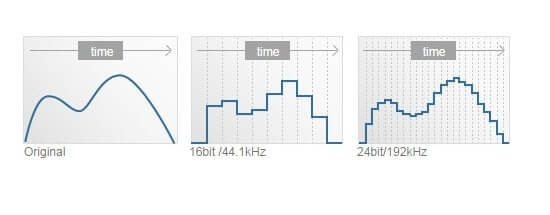What is Frequency Response
If you’re a musician or audio enthusiast, you’ve probably heard the term “frequency response” thrown around quite a bit. But what is the frequency response, and why is it important in music equipment? In this blog post, we’ll explore the basics of frequency response and how it affects how music sounds.
I. Introduction
Frequency response is a critical aspect of music equipment because it determines how accurately it reproduces various frequencies in a sound. Music can sound muddled, distorted, or uneven without accurate frequency response. That is why frequency response is crucial when choosing music equipment, from microphones to speakers to headphones.
At its basic level, frequency response refers to how well a device reproduces sound across the entire range of frequencies audible to the human ear. This range typically includes frequencies from 20Hz to 20kHz, which encompasses the bass, midrange, and treble frequencies in most music. Frequency response is measured in decibels (dB) and is represented graphically as a frequency response curve. In the next section, we’ll dive deeper into frequency response and how it’s measured.
II. What is Frequency Response?
Now that we understand why frequency response is important let’s take a closer look at what it is.
A. Definition of Frequency Response
Frequency response measures how well a device reproduces sound across the range of audible frequencies. It is typically measured in decibels (dB) and represented graphically as a frequency response curve. A frequency response curve shows how much volume the device produces at each frequency in the audible range, with the vertical axis representing volume and the horizontal axis representing frequency.
B. How is Frequency Response Measured?
Frequency response is measured by playing a series of tones across the audible frequency range and measuring the device’s output at each frequency. The output is then compared to a reference level to determine how accurately the device reproduces each frequency. This process is repeated multiple times to create a frequency response curve.
Frequency response curves can vary widely depending on the device and the manufacturer. Some devices may have a “flat” frequency response curve, meaning that the device reproduces all frequencies equally accurately. Other devices may have curves that emphasize specific frequencies or roll off others. In the next section, we’ll discuss how frequency response affects how music sounds.
III. How Does Frequency Response Affect Sound Quality?
Now that we know what frequency response is and how it’s measured let’s explore how it affects how music sounds.
A. Explanation of How Frequency Response Affects the Way Music Sounds
Frequency response plays a critical role in determining how music sounds. A device with a “flat” frequency response curve will reproduce all frequencies in the audible range with equal accuracy, resulting in a balanced and natural sound. However, if a device emphasizes or de-emphasizes specific frequencies, it can affect the tonal balance of the music and make it sound “off.”
B. Examples of How Different Frequency Responses Can Affect Music
For example, suppose a pair of headphones have a frequency response curve that emphasizes the bass frequencies. In that case, the music may sound overly “boomy” or muffled, and the midrange and treble frequencies may be overshadowed. On the other hand, if a speaker has a frequency response curve that rolls off the high frequencies, the music may sound dull and lacking in clarity.
C. Importance of Matching Frequency Response to the Type of Music Being Played
It’s essential to match the frequency response of your equipment to the type of music being played. For example, headphones or speakers with an emphasized bass response may sound great if you’re listening to bass-heavy electronic music. However, if you’re listening to classical music or acoustic recordings, you may want equipment with a flatter frequency response to accurately reproduce the natural timbres of the instruments.
IV. Common Frequency Response Terms and Concepts
To fully understand frequency response, it’s helpful to be familiar with some standard terms and concepts. In this section, we’ll explore some of these concepts.
- Frequency Range: The range of audible frequencies, typically 20Hz to 20kHz, in which a device can accurately reproduce sound.
- Flat Frequency Response: A frequency response curve that shows equal output across the entire audible frequency range. That means the device accurately reproduces all frequencies without emphasizing or de-emphasizing any particular frequency.
- Low and High Pass Filters: Filters that limit the frequency range of a signal. A low-pass filter blocks high-frequency signals and allows low-frequency signals to pass through, while a high-pass filter does the opposite.
- Roll-off: A gradual decrease in volume at high or low frequencies, as shown on a frequency response curve.
- Resonant Frequency: The frequency at which a device resonates or vibrates most strongly, resulting in an emphasized output at that frequency.
These concepts are used in a variety of music equipment. For example, a subwoofer is designed to reproduce low-frequency sounds, so it may have a low-pass filter that limits the frequency range to the bass frequencies. A speaker or headphone with a flat frequency response curve is ideal for accurate sound reproduction. In contrast, a device with a resonant frequency in the midrange may emphasize specific frequencies and alter the tonal balance of the music.
V. Conclusion
frequency response is an important concept to understand regarding music equipment. Knowing the frequency response and how it affects sound quality, you can make informed decisions when purchasing equipment and adjusting settings. Matching frequency response to the type of music being played can significantly improve the listening experience. Remember, a flat frequency response curve is typically ideal for accurate sound reproduction, but there may be cases where a device with a specific frequency response curve is appropriate.
